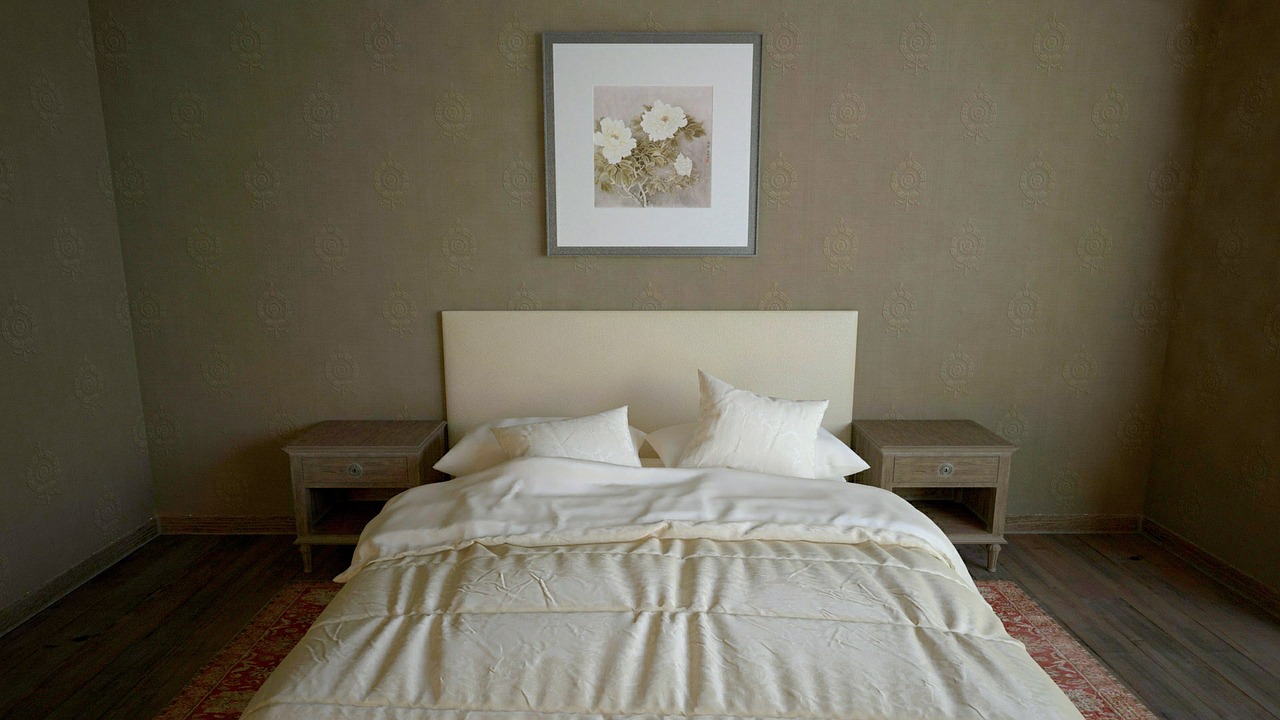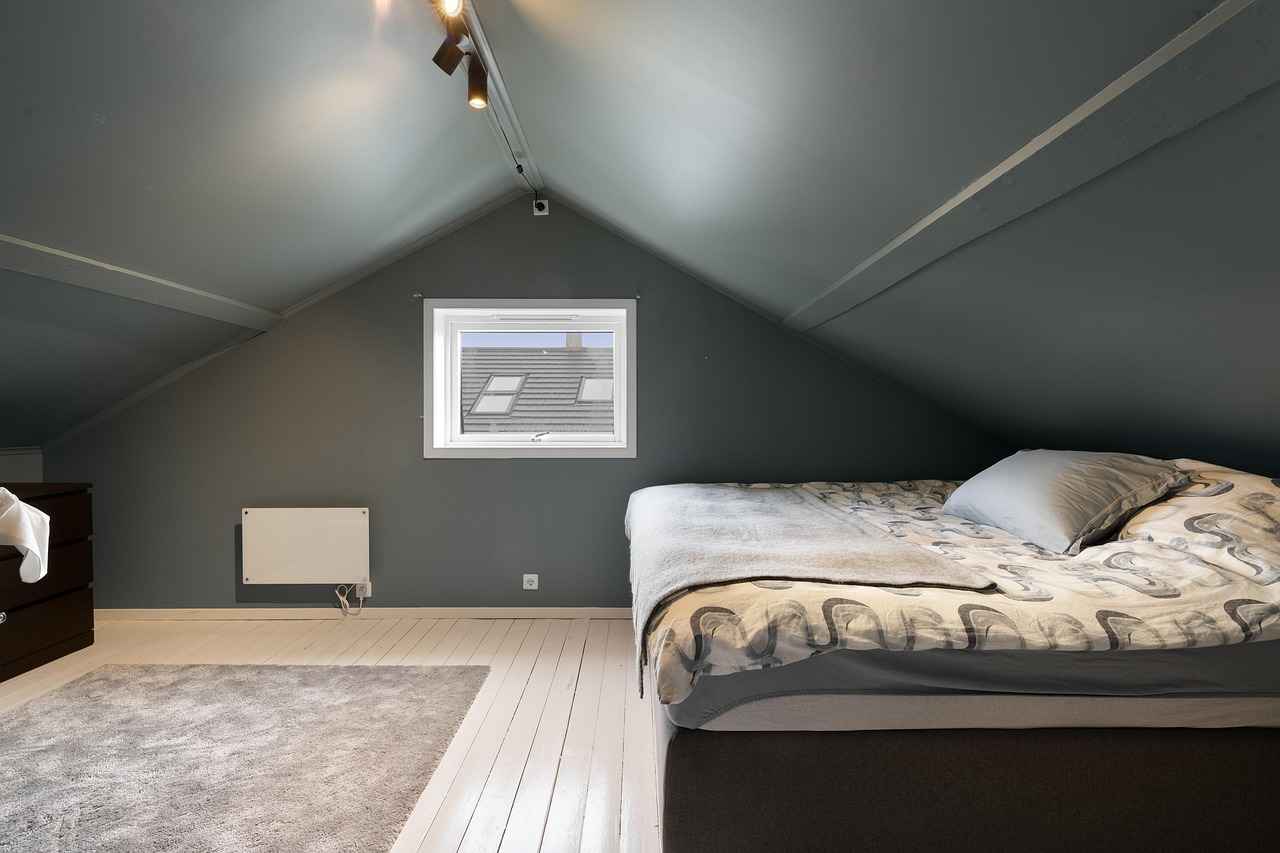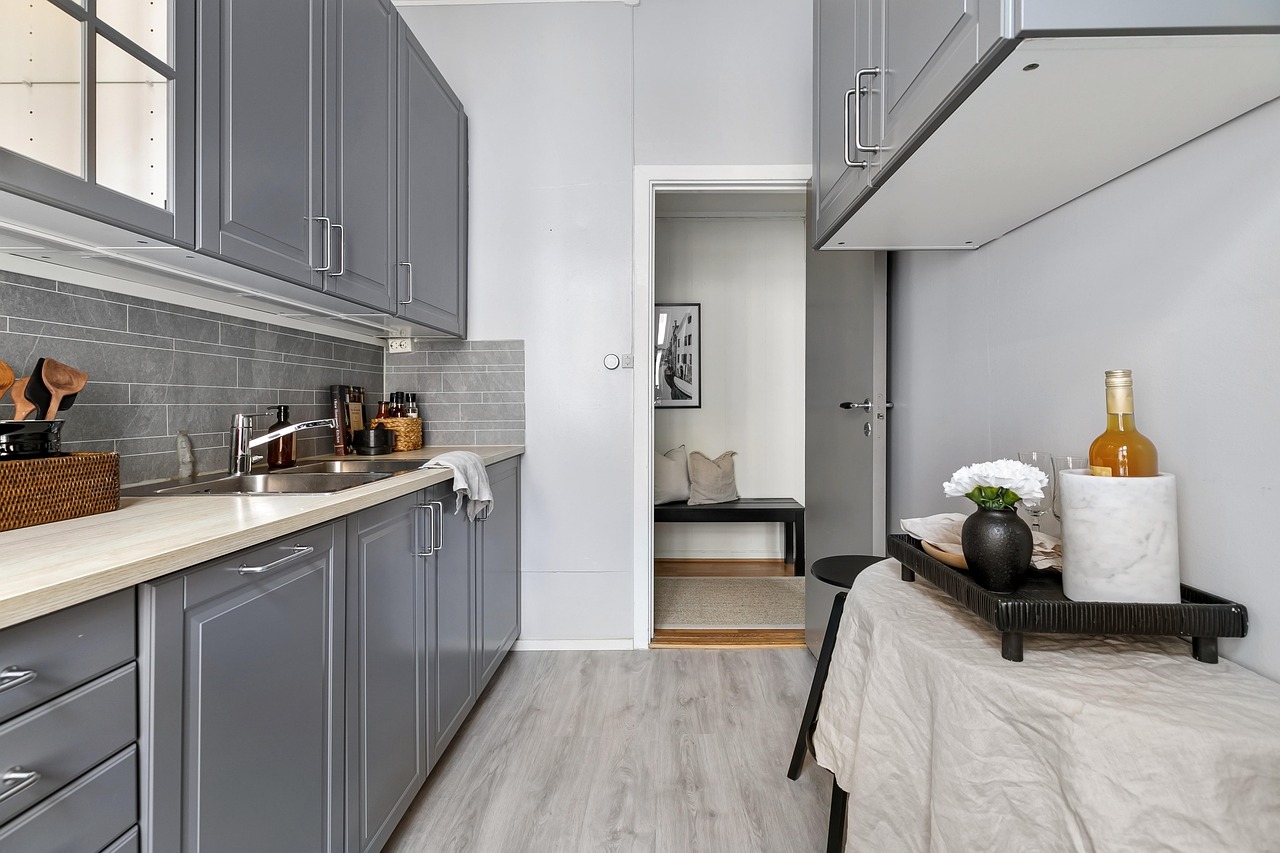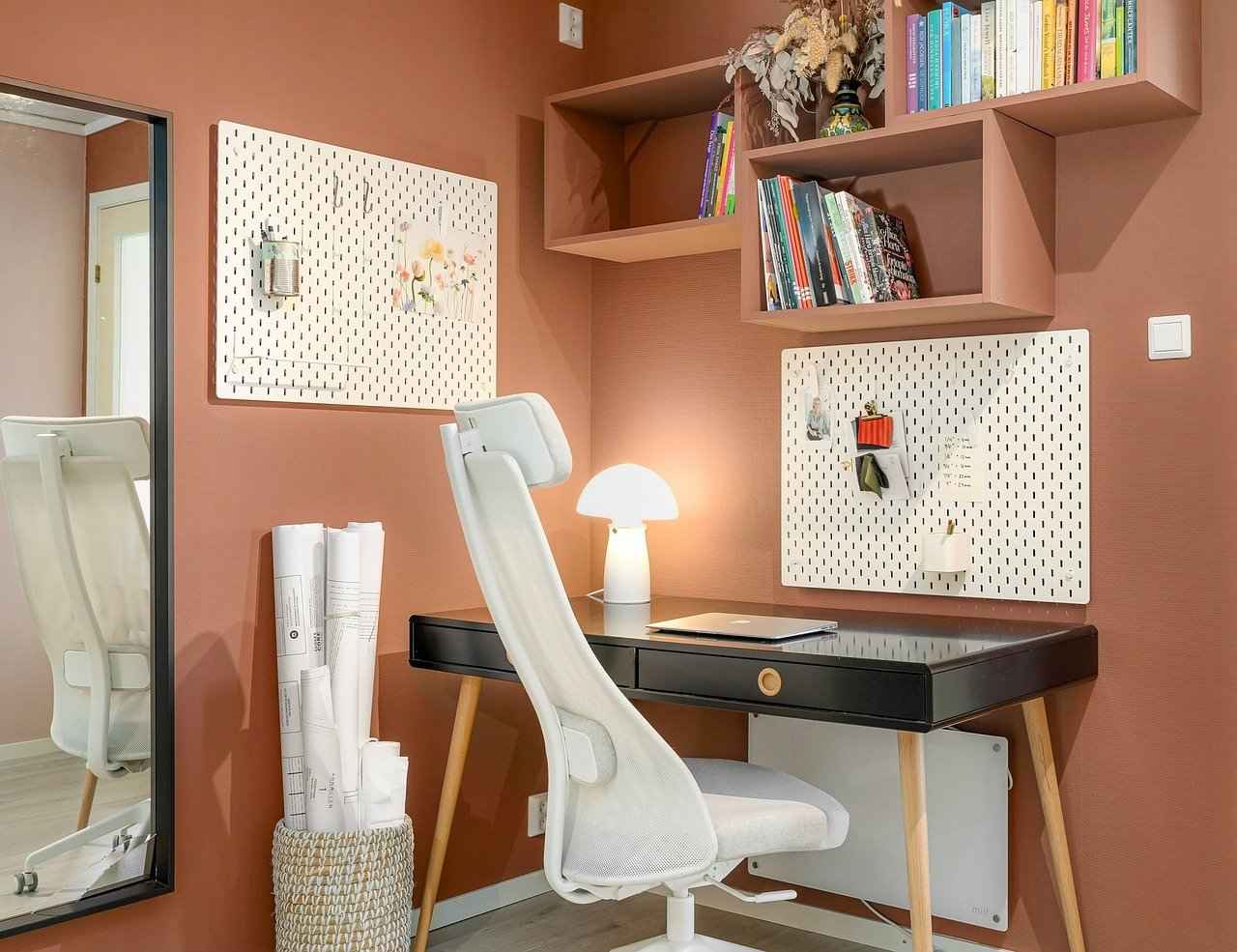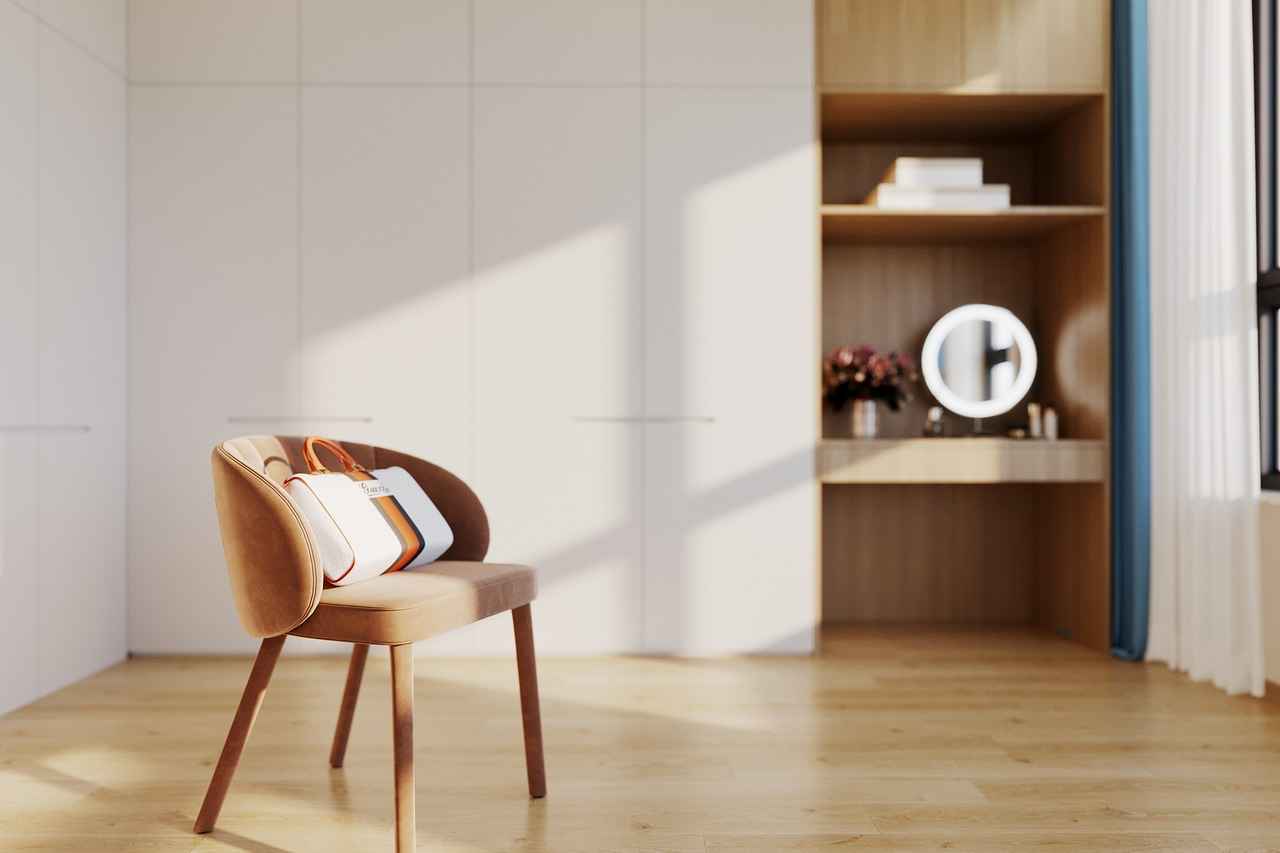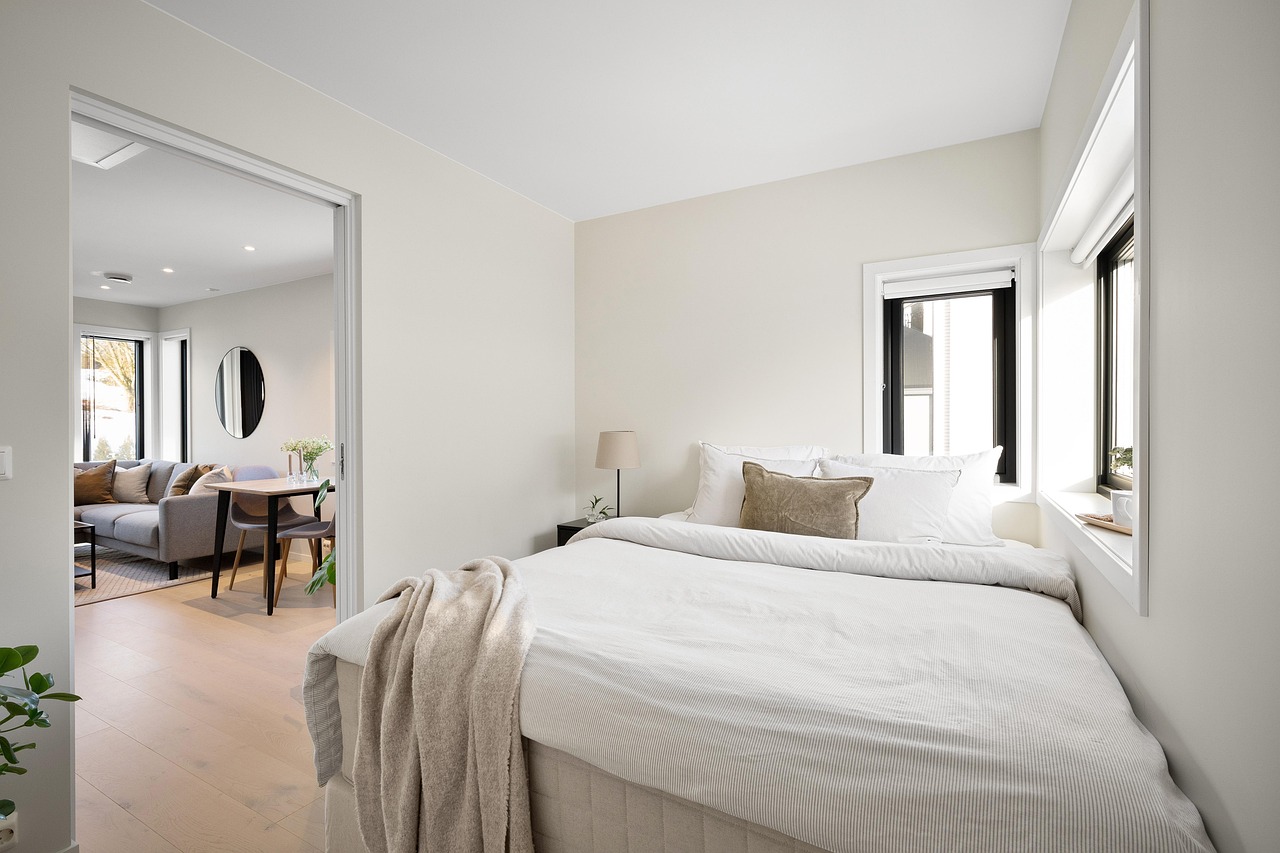Solid wood beds have long been celebrated for their durability and aesthetic charm. As a centerpiece in any bedroom, they not only provide a sturdy foundation for a good night’s sleep but also enhance the overall decor with their natural beauty. This article delves into the myriad design inspirations that solid wood beds offer, ensuring that your bedroom remains stylish and inviting while benefiting from long-lasting quality.
Opting for a solid wood bed means investing in a piece of furniture that will stand the test of time. Unlike particle board or plywood, solid wood is renowned for its strength and resilience. It can withstand daily wear and tear, making it a practical choice for families and individuals alike. Moreover, the unique grain patterns and rich colors of solid wood add a touch of elegance to any bedroom.
When selecting a solid wood bed, the type of wood plays a crucial role in both the bed’s durability and its aesthetic appeal. Below are some popular choices:
- Oak: Known for its strength, oak is versatile and can fit into various design styles.
- Maple: With its light color and smooth grain, maple offers a modern touch.
- Cherry: Cherry wood darkens beautifully over time, adding warmth and character.
Oak is a favored choice for many due to its incredible strength and versatility. It is resistant to wear, making it ideal for a bed that will see years of use. Additionally, oak can complement a wide range of design styles, from rustic to contemporary.
Understanding the differences between white oak and red oak can help you make an informed decision. White oak is typically more durable and water-resistant, while red oak is slightly softer and boasts a more pronounced grain.
The right finish can enhance the natural beauty of oak beds. Options range from natural oils to rich stains, allowing you to achieve the desired aesthetic for your bedroom.
Maple wood is often chosen for its clean, modern appearance. Its light color and fine grain make it perfect for contemporary designs, providing a fresh and airy feel to the bedroom.
Solid wood beds can be crafted in various design styles, each offering a unique aesthetic. Below are some popular styles:
- Rustic: Emphasizes natural beauty and simplicity, perfect for creating a cozy atmosphere.
- Contemporary: Focuses on sleek lines and minimalism, integrating wood into modern aesthetics.
- Traditional: Features classic designs that exude elegance and timelessness.
Customization allows you to tailor your bed to fit your personal style. Options include selecting the size, finish, and additional features like built-in storage, enhancing both functionality and design.
Maximizing space is essential in any bedroom. Solid wood beds with built-in storage solutions, such as drawers or under-bed compartments, can help keep your space organized and clutter-free.
Selecting the appropriate bed size is crucial for comfort and space management. Consider the dimensions of your room and how the bed will fit within the layout. A well-sized bed can make a significant difference in the overall feel of your space.
To ensure the longevity of your solid wood bed, proper maintenance is essential. Regular cleaning and care can help preserve its beauty and functionality.
Use a soft, damp cloth to wipe down your bed regularly, and avoid harsh chemicals that can damage the wood. Consider using specialized wood cleaners to maintain its finish.
Over time, scratches and dents may occur. Simple repair techniques, such as using wood filler or touch-up markers, can help restore the appearance of your solid wood bed, keeping it looking pristine.
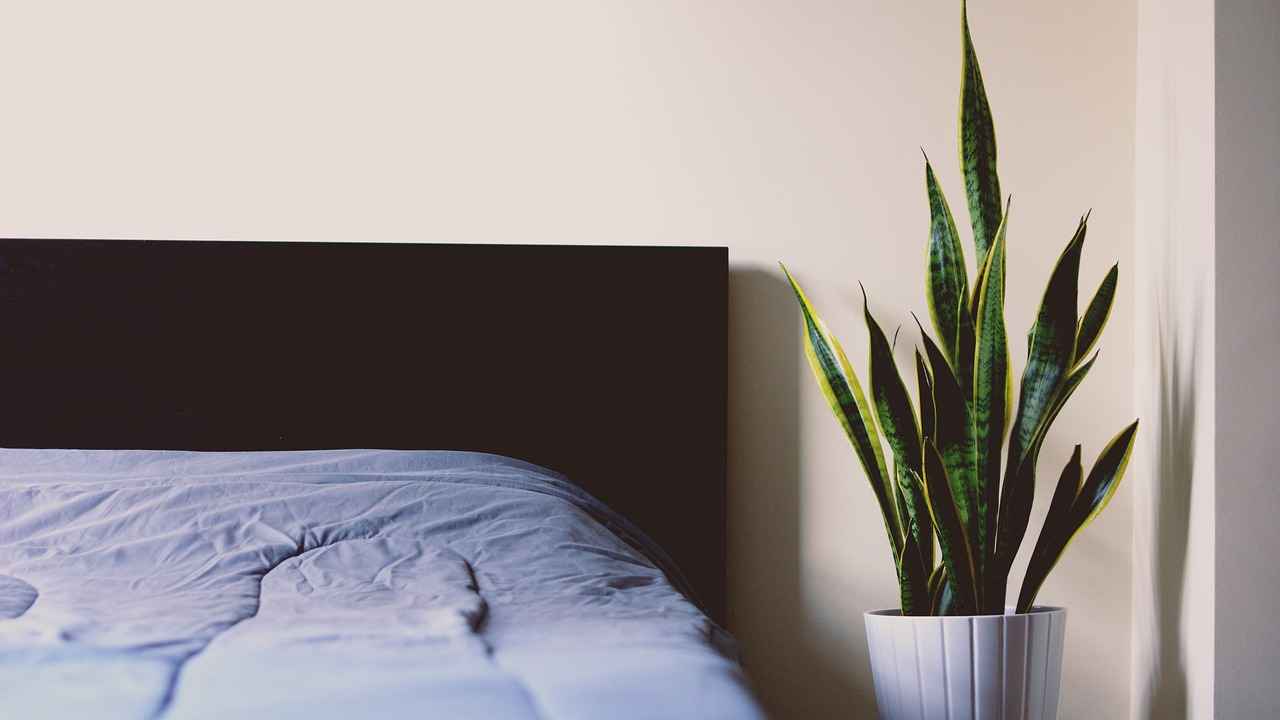
Why Choose Solid Wood for Your Bed?
When it comes to selecting the perfect bed, solid wood stands out as a premier choice, merging durability with timeless elegance. Unlike synthetic materials or engineered wood, solid wood beds are crafted from whole pieces of timber, ensuring a robust structure that can withstand the test of time. This section delves into the numerous benefits of opting for solid wood, highlighting its unmatched longevity and aesthetic appeal.
One of the most significant advantages of solid wood beds is their durability. Solid wood is inherently strong, capable of supporting substantial weight without sagging or warping. This resilience not only promises years of reliable use but also reduces the need for frequent replacements, making it a cost-effective investment in the long run. In contrast, beds made from particle board or MDF (medium-density fiberboard) may not offer the same level of strength, often leading to quicker wear and tear.
In addition to durability, solid wood beds exude a natural beauty that enhances any bedroom decor. The rich textures, unique grains, and warm tones of wood create an inviting atmosphere, making your bedroom a sanctuary. Whether you prefer the rustic charm of reclaimed wood or the sleek sophistication of maple, solid wood offers a variety of aesthetic options that can complement any design style.
Furthermore, solid wood is an environmentally friendly choice. Many manufacturers source their wood from sustainable forests, ensuring that your purchase supports responsible forestry practices. This eco-conscious aspect appeals to consumers seeking to make environmentally friendly decisions without compromising on quality or style.
Moreover, solid wood beds can be easily customized to fit your personal style and needs. From various finishes that highlight the wood’s natural beauty to different designs that suit your taste, the possibilities are endless. Whether you desire a classic four-poster bed or a minimalist platform style, solid wood can adapt to your vision.
Another noteworthy benefit is the longevity of solid wood furniture. With proper care, these beds can last for generations, often becoming cherished family heirlooms. Unlike their manufactured counterparts, which may degrade over time, solid wood beds can be refinished or repaired, allowing them to maintain their beauty and functionality.
In conclusion, choosing a solid wood bed is not merely about selecting a piece of furniture; it is an investment in quality, style, and sustainability. With their durability, aesthetic appeal, and environmental benefits, solid wood beds stand as a testament to the enduring nature of quality craftsmanship.
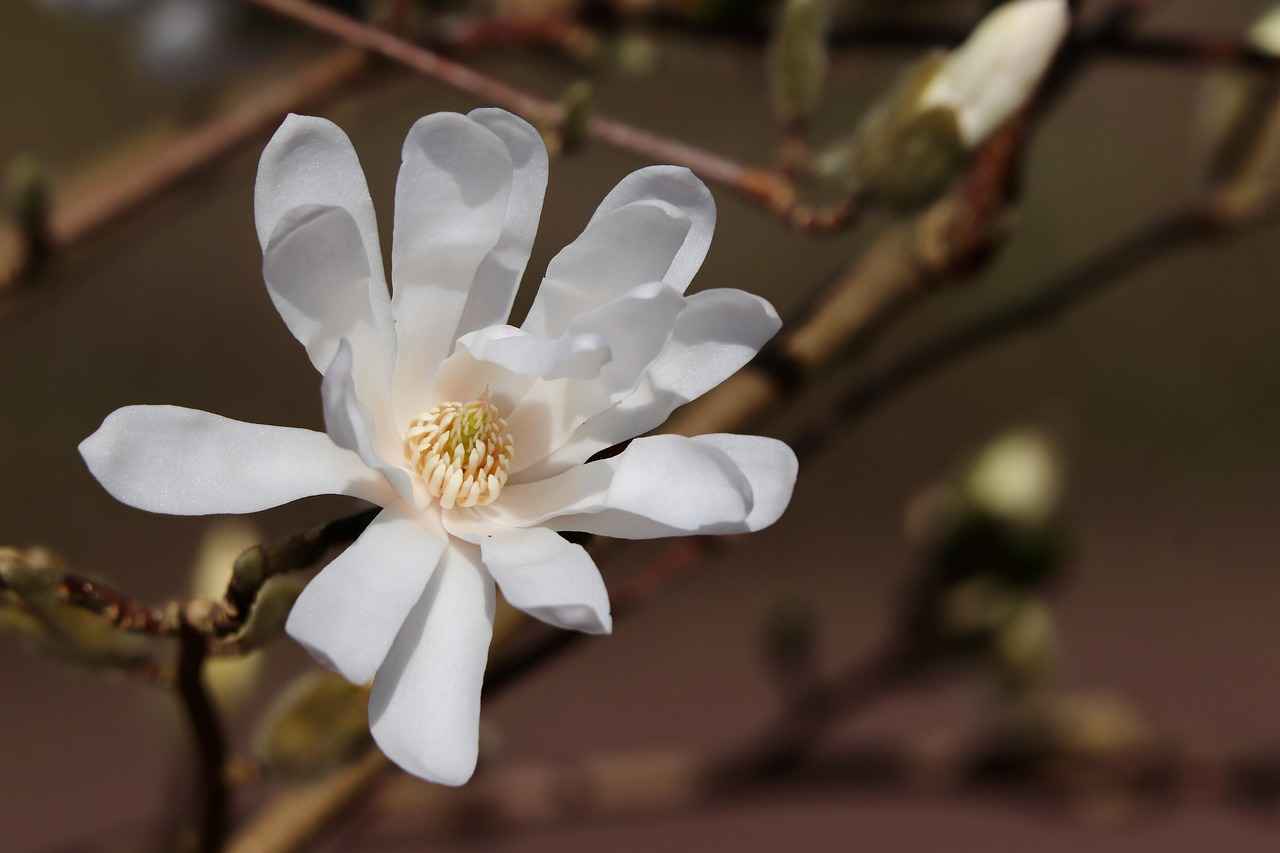
Popular Types of Solid Wood for Beds
When it comes to selecting the right material for your bed, the choice of wood plays a crucial role in both aesthetics and durability. Different wood types offer unique aesthetics and durability. Here, we explore various options such as oak, maple, and cherry, highlighting their characteristics and suitability for bed design.
- Oak: Known for its strength and versatility, oak is a popular choice for bed frames. It is durable and resistant to wear, making it ideal for everyday use. Oak comes in two primary varieties: white oak and red oak. White oak is known for its water resistance and is often used in outdoor furniture, while red oak features a more pronounced grain and is slightly softer.
- Maple: Maple wood is favored for its clean, modern look and light color. Its smooth grain and subtle patterns make it a popular choice for contemporary designs. Maple is also highly durable, making it suitable for beds that will withstand daily use. Its natural resistance to scratches and dents adds to its appeal.
- Cherry: Cherry wood is renowned for its rich color and smooth finish. Over time, cherry develops a beautiful patina, enhancing its aesthetic appeal. It is a softer wood compared to oak and maple, which makes it easier to work with but requires more care to maintain its surface.
Each of these wood types brings its own unique charm and functionality to bed design. When choosing the right wood for your bed, consider not only the visual appeal but also the durability and maintenance requirements.
For example, if you prefer a more rustic or traditional look, oak may be your best option due to its robust nature and classic appeal. On the other hand, if you are leaning towards a modern aesthetic, maple’s sleek appearance may better suit your style. Cherry, with its luxurious finish, can add an elegant touch to any bedroom.
Additionally, the finishing options for these woods significantly impact their overall look and feel. Natural oils can enhance the grain and color of oak, while stains can be applied to maple and cherry to achieve a desired tone. Each finish not only affects the appearance but also adds a layer of protection against wear and tear.
In summary, understanding the characteristics of different wood types is essential in making an informed decision for your bed design. Whether you choose oak, maple, or cherry, each wood type offers unique benefits that can complement your personal style and enhance the overall ambiance of your bedroom.
Oak Beds: Strength and Versatility
Oak wood is celebrated for its remarkable strength and versatility, making it a top choice for bed designs. This section delves into the unique characteristics of oak, highlighting its durability and aesthetic appeal, which can seamlessly integrate into various interior styles.
One of the most notable qualities of oak is its resistance to wear. This hardwood is naturally dense, which allows it to withstand daily use without showing significant signs of damage. Whether it’s a bustling family home or a serene bedroom retreat, oak beds can endure the test of time, maintaining their structural integrity and beauty.
In addition to its strength, oak possesses a distinctive grain pattern that adds visual interest to any piece of furniture. The unique markings and colors of oak can range from light golden hues to deeper, richer tones, making it suitable for a variety of design aesthetics. This adaptability allows oak beds to complement both traditional and modern settings, enhancing the overall ambiance of the room.
When considering oak for bed design, it’s essential to understand the two primary types: white oak and red oak. White oak is known for its water resistance and is often used in outdoor furniture, while red oak tends to have a more pronounced grain and is slightly softer, making it easier to work with for intricate designs. Choosing between these two types depends on personal preference and the intended use of the bed.
Another significant advantage of oak is its ability to adapt to various finishing techniques. From natural oils to rich stains, the finishing options for oak are abundant, allowing homeowners to achieve their desired aesthetic. A clear finish can showcase the wood’s natural beauty, while a darker stain can create a more dramatic effect, enhancing the richness of the oak grain.
Furthermore, oak beds can be designed to fit various design styles. For instance, a rustic oak bed can bring warmth and charm to a country-style bedroom, while a sleek, modern oak design can offer a minimalist touch to contemporary spaces. This versatility makes oak a favored choice among designers and homeowners alike.
In summary, oak stands out as a premium material for bed construction, thanks to its strength, durability, and versatility. Its ability to complement a wide range of styles, combined with its natural beauty and resilience, makes it an ideal choice for anyone looking to invest in a solid wood bed that will last for generations. Whether you prefer the classic appeal of traditional designs or the clean lines of modern aesthetics, an oak bed is sure to enhance your bedroom space.
White Oak vs. Red Oak
When it comes to selecting the perfect wood for your bed, understanding the differences between white oak and red oak is essential. Both types of oak are popular choices in furniture-making due to their durability and aesthetic appeal, but they possess distinct characteristics that may influence your decision.
Appearance is one of the most noticeable differences between white and red oak. White oak has a more muted, grayish-brown hue with a subtle, tight grain pattern, giving it a sophisticated and elegant look. In contrast, red oak features a warmer, reddish-brown tone and a more pronounced grain pattern, which can add a rustic charm to your bedroom. If you prefer a more contemporary style, white oak may be the better choice, while red oak can complement traditional designs beautifully.
Another important factor to consider is durability. Both types of oak are known for their strength, but white oak is generally considered to be slightly more durable. It has a higher density and is more resistant to moisture, making it less prone to warping and cracking over time. This characteristic can be particularly beneficial in humid environments. Red oak, while still strong, is more susceptible to scratches and dents due to its softer nature. If you have children or pets, this is a crucial consideration.
When it comes to workability, both woods are relatively easy to work with, but they do have their differences. White oak tends to be more challenging to stain due to its closed grain structure, often resulting in a more uniform finish. Red oak, on the other hand, absorbs stains more readily, allowing for a broader range of finishes. This can be advantageous if you are looking to achieve a specific color or effect.
Additionally, cost can play a significant role in your decision. Generally, red oak is more affordable compared to white oak, making it a popular choice for budget-conscious consumers. However, investing in white oak may pay off in the long run due to its enhanced durability and timeless appeal.
Ultimately, the choice between white oak and red oak will depend on your personal preferences and the specific requirements of your bedroom design. If you’re looking for a sleek and modern aesthetic with superior durability, white oak is an excellent option. Conversely, if you prefer a warm and inviting atmosphere with a more traditional vibe, red oak may be the way to go.
In conclusion, both white and red oak offer unique benefits and characteristics that can enhance your bed’s overall design. By understanding these differences, you can make an informed choice that aligns with your style and practical needs.
Finishes for Oak Beds
When it comes to enhancing the natural beauty of oak beds, the choice of finish plays a crucial role. The right finish not only protects the wood but also brings out its unique grain patterns and color variations, creating a stunning focal point in your bedroom. This section delves into the various finishing options available for oak beds, helping you achieve the desired aesthetic while ensuring durability.
Natural Oils: A Timeless Choice
One of the most popular choices for finishing oak beds is natural oils. These oils penetrate the wood, enhancing its natural beauty without forming a thick film on the surface. Options like linseed oil or tung oil provide a warm, rich finish that highlights the grain and texture of the oak. Additionally, natural oils are easy to apply and maintain, making them an excellent choice for those who appreciate a more organic look.
Stains: Customizing the Hue
If you prefer a specific color or shade, stains can be an ideal option. Available in a wide range of hues, stains allow you to customize the appearance of your oak bed while still showcasing its natural grain. Popular stain colors include walnut, cherry, and espresso. When applying stains, it’s essential to test a small area first to ensure that the final color meets your expectations.
Paint: A Bold Statement
For those looking to make a bold design statement, paint can transform an oak bed into a unique piece of art. Whether you choose a soft pastel or a vibrant color, painting can completely change the look and feel of the furniture. However, it’s important to use high-quality paint and primer to ensure durability and a smooth finish. Consider a matte or glossy finish depending on your desired aesthetic.
Varnishes and Lacquers: High-Gloss Protection
For a more polished and durable finish, varnishes and lacquers are excellent choices. These finishes create a hard, protective layer on the surface of the wood, making them resistant to scratches and stains. While they can enhance the color of the wood, they may also obscure some of the natural grain patterns. Choosing a high-quality product ensures that the finish lasts for years while providing a stunning shine.
Water-Based Finishes: Eco-Friendly Options
As environmental awareness grows, water-based finishes have become increasingly popular. These finishes are low in volatile organic compounds (VOCs), making them a safer choice for indoor air quality. They dry quickly and are easy to clean up, providing a durable finish that can enhance the beauty of oak beds without harming the environment.
Choosing the Right Finish for Your Style
Ultimately, the choice of finish for your oak bed should reflect your personal style and the overall decor of your bedroom. Whether you prefer the natural look of oils, the customization of stains, or the boldness of paint, each option has its unique advantages. Consider factors such as maintenance, desired aesthetics, and environmental impact when making your decision.
In conclusion, the finishing options available for oak beds are diverse and can significantly enhance their beauty and functionality. By carefully selecting the right finish, you can create a stunning centerpiece that complements your bedroom while ensuring the longevity of your investment.
Maple Beds: A Modern Touch
Maple wood is increasingly becoming a popular choice for furniture, particularly in the design of beds. Its clean lines and modern aesthetic make it an ideal material for contemporary bedroom designs. The light color of maple, ranging from creamy white to light golden hues, allows it to blend seamlessly with various color palettes and design elements. This section delves into the numerous advantages of choosing maple beds, highlighting their unique characteristics and suitability for modern interiors.
- Durability: Maple wood is known for its strength and durability. It is a hardwood, which means it can withstand the rigors of daily use without easily showing signs of wear and tear.
- Smooth Grain: The smooth grain of maple not only enhances its visual appeal but also provides a comfortable surface. This makes it an excellent choice for those who appreciate a refined finish.
- Versatile Design: Maple beds can be crafted in various styles, from minimalist frames to ornate designs, allowing homeowners to choose a bed that perfectly fits their aesthetic preferences.
- Eco-Friendly: Maple is often sourced from sustainable forests, making it an environmentally friendly option for conscious consumers.
One of the standout features of maple wood is its ability to fit into a contemporary design scheme. The neutral tones of maple allow it to serve as a versatile backdrop for various decor styles, enabling easy integration with other furniture and accessories. Whether you prefer a scandinavian look or a more industrial vibe, a maple bed can complement your vision.
Additionally, the light color of maple can create an illusion of space in smaller bedrooms, making it a practical choice for those with limited square footage. The bright, airy feel of maple wood can help to open up a room, promoting a sense of tranquility and relaxation.
When considering the finish for a maple bed, options abound. Natural oils can enhance the wood’s inherent beauty, while stains can add depth and character. Many homeowners opt for a clear finish to showcase the wood’s natural grain, making it a focal point in the bedroom.
Furthermore, maple beds are easy to maintain. Regular dusting and occasional polishing can keep the wood looking new for years. In the event of scratches or minor damage, repairs can often be done with simple touch-up markers or wood fillers, preserving the bed’s appearance.
In conclusion, maple beds offer a unique combination of style, durability, and practicality, making them an excellent choice for modern bedroom designs. Their light color and smooth grain not only enhance the aesthetic appeal but also ensure that these beds stand the test of time. Whether you’re looking for a sleek platform bed or a more traditional design, maple wood provides a versatile foundation for creating a beautiful and functional sleeping space.

Design Styles for Solid Wood Beds
Solid wood beds are not just functional pieces of furniture; they are also significant design elements that can transform the ambiance of your bedroom. With an array of styles available, each type of solid wood bed brings its own unique aesthetic appeal. This section explores several popular styles, including rustic, contemporary, and traditional, allowing you to find the perfect match for your personal taste and home decor.
Rustic Solid Wood Beds
Rustic solid wood beds are characterized by their natural beauty and organic appeal. They often showcase the wood’s raw textures and grains, creating a warm and inviting atmosphere. These beds typically feature elements such as distressed finishes, rough-hewn edges, and large, sturdy frames that embody a sense of comfort and coziness. The rustic style is perfect for those who appreciate a connection to nature and a more laid-back lifestyle.
- Materials: Commonly made from reclaimed wood, pine, or cedar.
- Color Palette: Earthy tones, including browns, greens, and grays.
- Design Elements: Incorporation of natural knots, live edges, and imperfections.
Contemporary Solid Wood Beds
In contrast, contemporary solid wood beds are defined by their sleek lines and minimalist design. This style emphasizes simplicity and functionality, often integrating innovative design concepts that maximize space and style. With clean silhouettes and a polished finish, contemporary beds are ideal for modern interiors, providing a sophisticated touch that aligns with current design trends.
- Materials: Often crafted from hardwoods like maple or walnut.
- Color Palette: Neutral colors such as white, black, or natural wood tones.
- Design Elements: Focus on geometric shapes and smooth surfaces.
Traditional Solid Wood Beds
Traditional solid wood beds evoke a sense of timeless elegance and classic charm. These designs often feature ornate details, such as carved headboards, intricate moldings, and rich finishes. Traditional beds are perfect for those who seek to create a refined and sophisticated bedroom atmosphere, often complementing antique or vintage decor.
- Materials: Typically made from hardwoods like oak, cherry, or mahogany.
- Color Palette: Deep, rich hues such as mahogany, dark walnut, or cherry.
- Design Elements: Emphasis on craftsmanship, with detailed carvings and luxurious finishes.
Choosing the Right Style for Your Bedroom
When selecting a solid wood bed, consider the overall theme of your bedroom. Each style can significantly influence the room’s atmosphere, so it’s essential to choose one that complements your existing decor. For instance, if your space features a lot of natural materials and earthy colors, a rustic bed may be the best fit. Conversely, if you prefer a clean, modern aesthetic, a contemporary design would be more suitable.
In addition to aesthetics, think about the functionality of the bed. Some styles offer built-in storage solutions, such as drawers or under-bed compartments, which can be particularly beneficial in smaller spaces. Ultimately, the right solid wood bed should not only enhance the visual appeal of your bedroom but also provide comfort and practicality.
In summary, the world of solid wood beds is rich with diverse styles, each offering unique benefits and aesthetics. Whether you gravitate towards the charm of rustic designs, the sleekness of contemporary styles, or the elegance of traditional options, there is a solid wood bed that can perfectly match your vision for your bedroom.
Rustic Solid Wood Beds
embody a unique charm that brings warmth and character to any bedroom. Their design emphasizes natural beauty and simplicity, making them an ideal choice for those seeking a cozy and inviting atmosphere. In this section, we delve into the various aspects of rustic solid wood beds, showcasing how they can transform your sleeping space into a serene retreat.
One of the most appealing features of rustic solid wood beds is their timeless aesthetic. Crafted from high-quality woods such as pine, oak, or reclaimed timber, these beds showcase the natural grains and imperfections that tell a story. Each piece is unique, adding a touch of authenticity to your decor. The organic textures and earthy tones create a harmonious environment, perfect for relaxation after a long day.
When considering a rustic solid wood bed, it’s essential to explore different design elements that enhance its appeal. Here are some popular features:
- Live Edge Design: This style retains the natural edge of the wood, showcasing its organic shape and beauty.
- Distressed Finishes: A weathered look adds character and a sense of history, making the bed appear as though it has been cherished for generations.
- Handcrafted Details: Many rustic beds are handmade, incorporating artisanal techniques that highlight craftsmanship and individuality.
In addition to their aesthetic qualities, rustic solid wood beds also offer durability. Solid wood is known for its strength, making it a long-lasting investment. Unlike particle board or cheaper materials, solid wood can withstand daily wear and tear, providing you with a reliable foundation for years to come. This durability is especially important for families or individuals who value practicality alongside style.
Furthermore, rustic solid wood beds can seamlessly integrate into various design styles. Whether your home leans toward farmhouse, industrial, or modern, these beds can complement and enhance your overall interior design. The versatility of wood allows it to adapt to different aesthetics while still maintaining its rustic charm.
Another significant advantage of rustic solid wood beds is their eco-friendliness. Many manufacturers source their materials sustainably, ensuring that your purchase supports environmentally responsible practices. Choosing reclaimed wood not only reduces waste but also adds a unique character to your bed, as each piece of wood carries its history and charm.
When it comes to accessorizing your rustic solid wood bed, consider incorporating natural textiles such as linen or cotton bedding in earthy tones. These materials will enhance the cozy feel of your bedroom while providing comfort. Additionally, adding decorative elements like woven baskets, wooden nightstands, or vintage lamps can further accentuate the rustic theme.
In summary, rustic solid wood beds are more than just furniture; they are a statement of style and sustainability. By choosing a bed that emphasizes natural beauty and simplicity, you create a space that invites relaxation and comfort. With their durability, versatility, and eco-friendly qualities, rustic solid wood beds are an excellent choice for anyone looking to enhance their bedroom’s ambiance.
Contemporary Solid Wood Beds
In the realm of modern bedroom design, stand out as a perfect blend of style and functionality. The emphasis on minimalism and sleek lines has made solid wood an increasingly popular choice among homeowners seeking to create a chic and inviting space. This section delves into how solid wood can be seamlessly integrated into contemporary aesthetics, enhancing both the look and feel of your bedroom.
One of the defining characteristics of contemporary design is its focus on simplicity. Solid wood beds can embody this principle through their clean lines and unembellished forms. For instance, a platform bed made from rich walnut or ash can serve as a stunning centerpiece, offering a sense of warmth without overwhelming the space. The natural grain of the wood adds texture, making it a visually appealing option that complements various color schemes.
Moreover, solid wood beds can be designed with innovative features that cater to modern needs. For example, incorporating built-in storage solutions, such as drawers or shelves, allows for a clutter-free environment while maintaining the bed’s sleek appearance. This functionality aligns perfectly with the contemporary ethos of maximizing space without sacrificing style.
When selecting a solid wood bed for a modern bedroom, consider the following design elements:
- Color Palette: Light woods like maple or birch can brighten a room, while darker woods like mahogany or ebony can add depth and sophistication.
- Finishes: Matte finishes are particularly popular in contemporary designs, as they provide a subtle elegance that enhances the natural beauty of the wood.
- Shape and Structure: Opt for beds with geometric shapes or low profiles to maintain the clean lines characteristic of modern aesthetics.
In addition to the aesthetic benefits, solid wood beds are also known for their durability. Unlike composite materials, solid wood can withstand the rigors of daily use, ensuring that your investment lasts for years. This durability is especially important in a contemporary setting where functionality and longevity are paramount.
Another aspect to consider is how solid wood beds can contribute to a sustainable lifestyle. Many manufacturers now source wood from responsibly managed forests, making it a more eco-friendly option compared to synthetic materials. This aligns with the growing trend of conscious consumerism, where individuals seek to make choices that are beneficial for both their homes and the environment.
To further enhance the contemporary look of your solid wood bed, consider pairing it with modern accessories. A simple, stylish headboard can add a touch of sophistication, while minimalist bedding can keep the overall look fresh and uncluttered. Additionally, incorporating decorative elements like abstract wall art or sculptural lighting can create a cohesive modern aesthetic in your bedroom.
In summary, contemporary solid wood beds are not just about aesthetics; they offer a perfect combination of style, functionality, and sustainability. By focusing on sleek lines and minimalism, these beds can transform your bedroom into a chic retreat that reflects your personal style while providing the durability and quality that solid wood is known for.
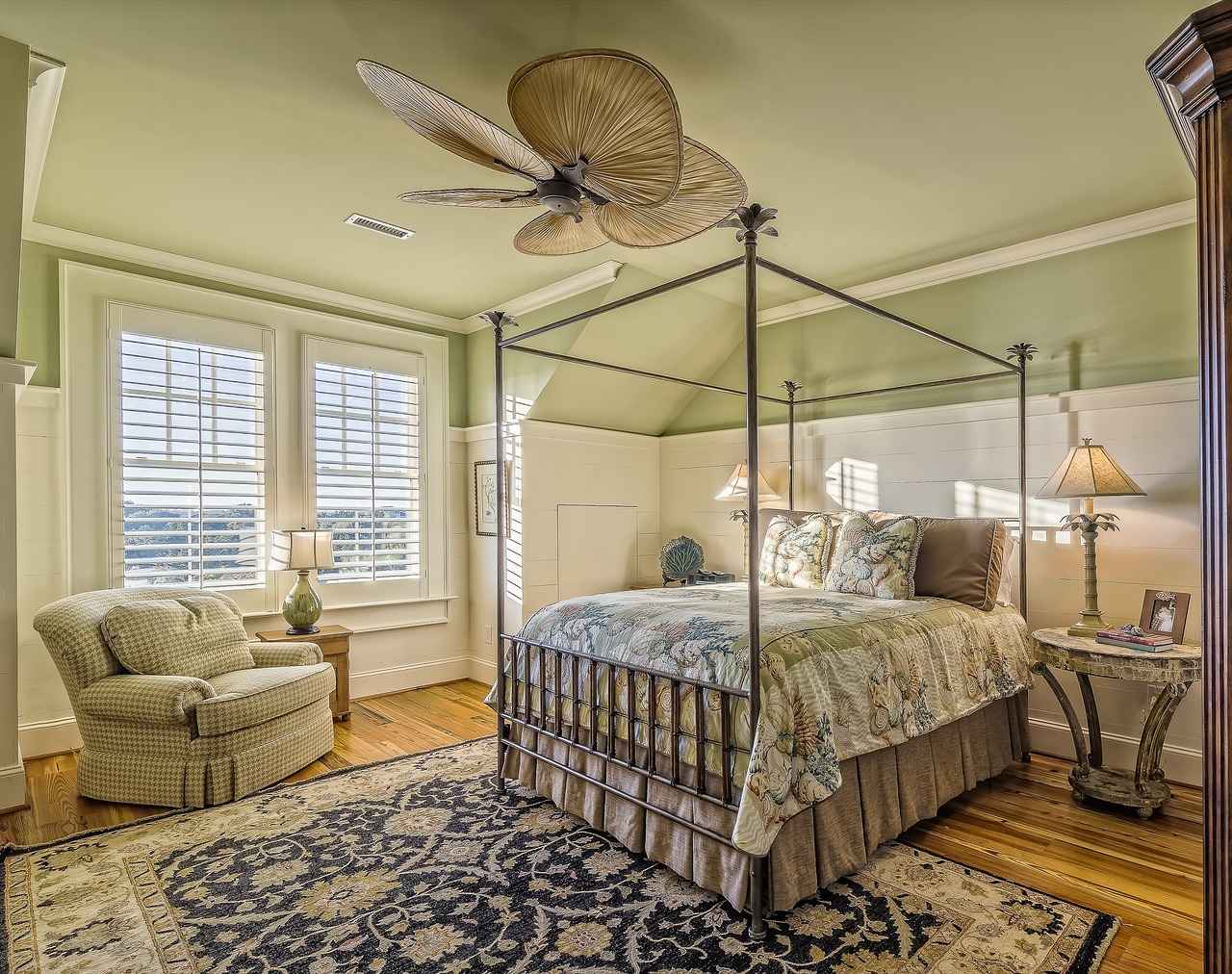
Customizing Your Solid Wood Bed
Customization of your solid wood bed is an exciting opportunity to create a piece that reflects your personal style and meets your specific needs. When considering customization, there are several key aspects to think about, including size, finish, and additional features like storage options. This section will delve into these elements, providing you with the insights needed to make informed decisions.
One of the most crucial aspects of customizing your bed is selecting the right size. A bed that fits your space perfectly not only enhances comfort but also complements the overall design of your bedroom. Here are some common bed sizes:
- Twin: Ideal for small rooms or guest spaces.
- Full: Offers more sleeping space, suitable for single sleepers.
- Queen: A popular choice for couples, providing ample room.
- King: Perfect for those who desire extra space while sleeping.
When choosing the right size, consider the dimensions of your bedroom, the layout of other furniture, and how much space you need for movement.
The finish of your solid wood bed can significantly influence its appearance and longevity. Various finishing options are available, including:
- Natural Oil Finishes: Enhance the wood’s natural beauty while providing protection.
- Stains: Allow you to customize the color and tone of the wood, matching your decor.
- Paint: Offers a modern twist and can be used to create a bold statement.
Each finish has its benefits, so consider your style preferences and the level of maintenance you are willing to commit to when making your selection.
Functional design is key in modern bedrooms, and incorporating storage solutions into your solid wood bed can maximize space. Here are some popular storage options:
- Under-Bed Drawers: Perfect for storing linens, clothing, or seasonal items.
- Built-In Shelves: Offer additional space for books or decorative items.
- Headboard Storage: A stylish way to keep essentials like books or glasses within reach.
By integrating storage into your bed design, you can maintain a clutter-free environment while enhancing the bed’s functionality.
Customization allows for personal touches that make your bed unique. Consider adding features such as:
- Custom Carvings: Personalize the headboard or footboard with intricate designs.
- Color Accents: Introduce colors that match your bedroom theme through upholstery or painted finishes.
- Adjustable Features: Options like adjustable headboards or footrests can enhance comfort.
These personalized elements can transform a standard bed into a statement piece that reflects your individual style.
In conclusion, customizing your solid wood bed is a rewarding process that allows you to create a piece that is not only functional but also aligns with your aesthetic preferences. By considering size, finish, storage options, and personal touches, you can design a bed that enhances your bedroom experience. Embrace the opportunity to tailor your bed to your unique needs and style, ensuring it serves as a beautiful focal point in your home.
Storage Solutions in Solid Wood Beds
In today’s world, where maximizing space is essential, have become increasingly popular. These beds not only provide a comfortable sleeping area but also incorporate innovative storage options that enhance functionality without compromising on style. This section delves into various storage solutions available in solid wood beds, including drawers, under-bed compartments, and more, to help you make the most of your bedroom space.
Why Opt for Built-in Storage?
Choosing a bed with built-in storage is a practical decision for anyone looking to optimize their living space. Built-in storage solutions allow you to keep your bedroom organized and clutter-free. They provide a hidden space for storing items such as linens, seasonal clothing, or personal belongings, making them an excellent choice for both small and spacious rooms.
Types of Storage Solutions
- Drawers: Many solid wood beds come with built-in drawers that can be accessed easily. These drawers are typically located on the sides or foot of the bed, making them perfect for storing items you need close at hand.
- Under-bed Compartments: Another popular storage solution is the under-bed compartment. This space can be utilized for larger items such as suitcases or storage bins, effectively utilizing the area that often goes unused.
- Lift-up Storage: Some modern solid wood beds feature a lift-up mechanism that allows the mattress to be raised, revealing a spacious storage area underneath. This option is particularly useful for those who want to store bulky items.
Benefits of Storage Beds
Incorporating storage solutions into your bed design offers several benefits:
- Space Efficiency: By utilizing the space beneath your bed, you can free up valuable floor space for other furniture or decorative elements.
- Organizational Ease: Built-in storage helps keep your bedroom tidy, making it easier to find and access your belongings.
- Design Versatility: Solid wood beds with storage options come in various styles, allowing you to choose a design that complements your bedroom decor.
Choosing the Right Storage Solution
When selecting a solid wood bed with storage, consider the following factors:
- Room Size: Assess the dimensions of your bedroom to determine how much storage you need and what type of bed will fit comfortably.
- Storage Needs: Think about what you plan to store. If you have many linens, a bed with drawers may be ideal. If you need to store larger items, consider a lift-up bed.
- Style Preference: Ensure that the storage bed you choose aligns with your overall bedroom aesthetic, whether it’s rustic, contemporary, or traditional.
Conclusion
Incorporating storage solutions into your solid wood bed design not only enhances the functionality of your bedroom but also adds a layer of style. With various options available, you can find a bed that meets your storage needs while complementing your personal taste. By choosing a bed with built-in storage, you can enjoy a clutter-free and organized sleeping space, making your bedroom a serene retreat.
Choosing the Right Size for Your Bedroom
When it comes to designing your bedroom, choosing the right bed size is a fundamental aspect that can significantly impact both comfort and the overall aesthetic of the space. A bed that is too large can make a room feel cramped, while one that is too small may not provide the comfort you need for a good night’s sleep. This section aims to guide you through the process of selecting the appropriate bed size based on your room’s dimensions and layout.
Before diving into bed sizes, it’s essential to consider the dimensions of your bedroom. Measure the length and width of the room, taking note of any architectural features such as windows, doors, and built-in closets that may affect your bed placement. A well-measured room allows for better space management, ensuring that your bed complements the overall layout.
- Standard Bed Sizes: Familiarize yourself with standard bed sizes: Twin, Full, Queen, King, and California King. Each size serves different needs and preferences.
- Room Size Considerations: For smaller rooms, a Twin or Full bed may be ideal, providing adequate sleeping space without overwhelming the area. Conversely, larger rooms can accommodate Queen or King beds, allowing for a more luxurious sleeping experience.
- Layout and Flow: Consider the flow of the room. Ensure that there is enough space to move around the bed comfortably. A minimum of 24 inches of walking space around the bed is recommended.
Additionally, think about how the bed will fit with other furniture in the room. If you have a nightstand or a dresser, ensure there is enough space for these pieces without making the room feel cluttered. A good rule of thumb is to maintain a balanced proportion between the bed and other furnishings.
Another aspect to consider is the height of the bed. Some people prefer a lower profile bed for a modern look, while others may find higher beds easier to get in and out of. The height can also affect the visual balance in the room, especially when combined with other furniture pieces.
Furthermore, if you share your bed with a partner or pets, opting for a larger size can enhance comfort. A Queen or King bed provides ample space for multiple sleepers, reducing disturbances during the night.
Ultimately, the goal is to create a restful sanctuary that reflects your style while offering the functionality needed for everyday living. By carefully considering the size of your bed in relation to your bedroom’s dimensions and layout, you can achieve a harmonious balance that enhances both comfort and aesthetics.
In summary, selecting the right bed size involves a thoughtful assessment of your room’s dimensions, layout, and personal preferences. By keeping these factors in mind, you can make an informed decision that will contribute to a peaceful and stylish bedroom environment.

Maintaining Your Solid Wood Bed
Maintaining your solid wood bed is essential for preserving its natural beauty and ensuring its longevity. With proper care, your bed can remain a stunning centerpiece in your bedroom for years to come. Here are some practical tips to help you maintain your solid wood bed effectively:
To keep your solid wood bed looking pristine, it is important to establish a regular cleaning routine. Follow these steps:
- Dusting: Use a soft, lint-free cloth or a microfiber duster to remove dust and debris. This should be done weekly to prevent buildup.
- Cleaning: For deeper cleaning, use a damp cloth with a mild soap solution. Avoid harsh chemicals that can damage the wood’s finish.
- Drying: Always dry the wood immediately after cleaning to prevent moisture damage.
The finish on your solid wood bed not only enhances its appearance but also protects it from wear and tear. Here are some tips to maintain the finish:
- Coasters and Pads: Use coasters under drinks and pads under decorative items to prevent scratches and rings.
- Avoid Direct Sunlight: Keep your bed away from direct sunlight to prevent fading and discoloration.
- Reapplication: Depending on the finish, consider reapplying a protective coat every few years to maintain its luster.
Over time, your solid wood bed may accumulate scratches and dents. Here’s how to address these imperfections:
- Wood Fillers: For minor scratches, use a wood filler that matches the color of your bed. Apply it carefully and sand it down to blend with the surrounding area.
- Touch-Up Markers: These are ideal for small scratches and can be easily applied to restore the wood’s appearance.
- Professional Repair: For significant damage, consider hiring a professional to ensure a seamless repair.
Wood is sensitive to changes in humidity, which can lead to warping or cracking. To maintain the integrity of your bed:
- Use a Humidifier: In dry climates, consider using a humidifier to maintain a stable moisture level in your home.
- Monitor Temperature: Keep your bedroom at a consistent temperature to avoid drastic changes in humidity.
Regularly inspect your solid wood bed for any signs of wear or damage. Look for:
- Loose Hardware: Check and tighten any screws or bolts to ensure stability.
- Structural Integrity: Examine the bed frame for any cracks or weaknesses that may need attention.
By following these maintenance tips, you can preserve the beauty and functionality of your solid wood bed for many years. Proper care not only enhances its aesthetic appeal but also ensures that it remains a cherished piece of furniture in your home.
Cleaning and Care Tips
Maintaining the beauty and integrity of your solid wood bed requires regular cleaning and proper care. Wood is a natural material that can be susceptible to dust, dirt, and moisture, making it essential to adopt effective cleaning methods. Below, we outline practical steps and recommended products to help you keep your bed looking pristine.
- Dust Regularly: Use a soft, lint-free cloth or a microfiber duster to remove dust from your bed’s surface. This should be done at least once a week to prevent dust accumulation that can scratch the wood.
- Use Gentle Cleaners: For deeper cleaning, opt for a mild soap mixed with warm water. Dampen a cloth with the solution and gently wipe the surfaces. Avoid harsh chemicals or abrasive cleaners, as they can damage the finish.
- Wipe Spills Immediately: Wood can be sensitive to moisture. If a liquid is spilled, promptly blot it with a soft, dry cloth to prevent stains or warping.
- Polish for Shine: To maintain a beautiful finish, use a high-quality wood polish or conditioner every few months. This not only enhances the wood’s natural luster but also provides a protective layer against scratches.
- Avoid Direct Sunlight: Position your bed away from direct sunlight to prevent fading and drying out of the wood. Consider using curtains or blinds to control light exposure.
- Control Humidity: Wood reacts to changes in humidity. Keep your bedroom environment stable, ideally between 30-50% humidity, to prevent the wood from expanding or contracting.
- Inspect Regularly: Periodically check your bed for any signs of damage, such as loose joints or scratches. Early detection can make repairs easier and prolong the life of your furniture.
In addition to these cleaning tips, it’s important to consider the type of finish on your wood bed. Some finishes may require specific care products, so always refer to the manufacturer’s guidelines. If your bed has a lacquer or varnish finish, it may need less frequent polishing compared to an oil-finished bed.
Furthermore, when moving your bed or rearranging furniture, ensure to lift rather than drag to avoid scratching the floor or damaging the bed itself. Keeping your solid wood bed in optimal condition not only enhances its beauty but also ensures that it remains a cherished piece of furniture for years to come.
By following these cleaning and care tips, you can enjoy the durability and elegance of your solid wood bed while preserving its natural charm. Regular maintenance not only enhances the aesthetic appeal but also contributes to a healthier sleeping environment.
Dealing with Scratches and Dents
Scratches and dents on your solid wood bed can be frustrating, as they detract from the overall beauty and elegance of the furniture. However, with the right techniques and tools, you can easily restore your bed’s appearance without needing professional help. This section will guide you through various methods to deal with these imperfections, ensuring your bed remains a stunning focal point in your bedroom.
- Assess the Damage: Before you begin any repairs, take a moment to carefully examine the scratches and dents. Understanding the extent of the damage will help you choose the most effective repair method.
- Gather Your Supplies: For minor scratches, you will need a few basic supplies: wood filler, fine-grit sandpaper, a clean cloth, and a matching wood finish or polish. For deeper dents, you may also need a damp cloth and an iron.
Repairing Scratches
1. Clean the area around the scratch with a damp cloth to remove any dust or debris.2. Apply wood filler to the scratch, ensuring it fills the groove completely.3. Once dry, use fine-grit sandpaper to smooth the surface until it is flush with the surrounding wood.4. Wipe away any dust and apply a matching wood finish or polish to restore the shine.
Fixing Dents
1. For small dents, place a damp cloth over the affected area.2. Using a hot iron, gently press down on the cloth for a few seconds. The steam will help the wood fibers swell back into place.3. Once the dent is raised, allow it to dry completely.4. Sand lightly if necessary and apply wood polish to finish.
Preventive Measures
- Use Coasters and Trivets: Always place coasters under drinks and trivets under hot items to prevent scratches and heat damage.
- Regular Maintenance: Dust your bed regularly and apply a suitable wood polish to maintain its luster and protect the surface.
- Avoid Sharp Objects: Be cautious with sharp objects around your bed to minimize the risk of scratches.
By following these simple repair techniques and preventive measures, you can keep your solid wood bed looking beautiful for years to come. Remember, the key to maintaining the elegance of your furniture lies in regular care and prompt attention to any damage. With a little effort, your bed can continue to be a stunning centerpiece in your bedroom.
Frequently Asked Questions
- What are the benefits of choosing a solid wood bed?
Solid wood beds offer unmatched durability, aesthetic charm, and a timeless appeal that can enhance any bedroom. They are less likely to warp or break compared to beds made from engineered wood or particleboard, making them a long-term investment.
- How do I choose the right type of wood for my bed?
When selecting wood, consider factors like durability, appearance, and your personal style. For example, oak is strong and versatile, while maple offers a modern touch with its light color and smooth grain. Each wood type has its unique characteristics that can complement different design styles.
- What maintenance is required for solid wood beds?
To keep your solid wood bed looking great, regular cleaning with a soft cloth is essential. Additionally, using wood polish or oil can help maintain its finish. Addressing scratches and dents promptly will also preserve its beauty over time.
- Can I customize my solid wood bed?
Absolutely! Customization options are plentiful, including size, finish, and additional features like built-in storage. Tailoring your bed to fit your personal style and space needs can enhance both functionality and aesthetics in your bedroom.
- What styles are available for solid wood beds?
Solid wood beds come in various styles, including rustic, contemporary, and traditional designs. Each style offers a unique aesthetic, allowing you to choose one that fits your overall bedroom theme and personal taste.




